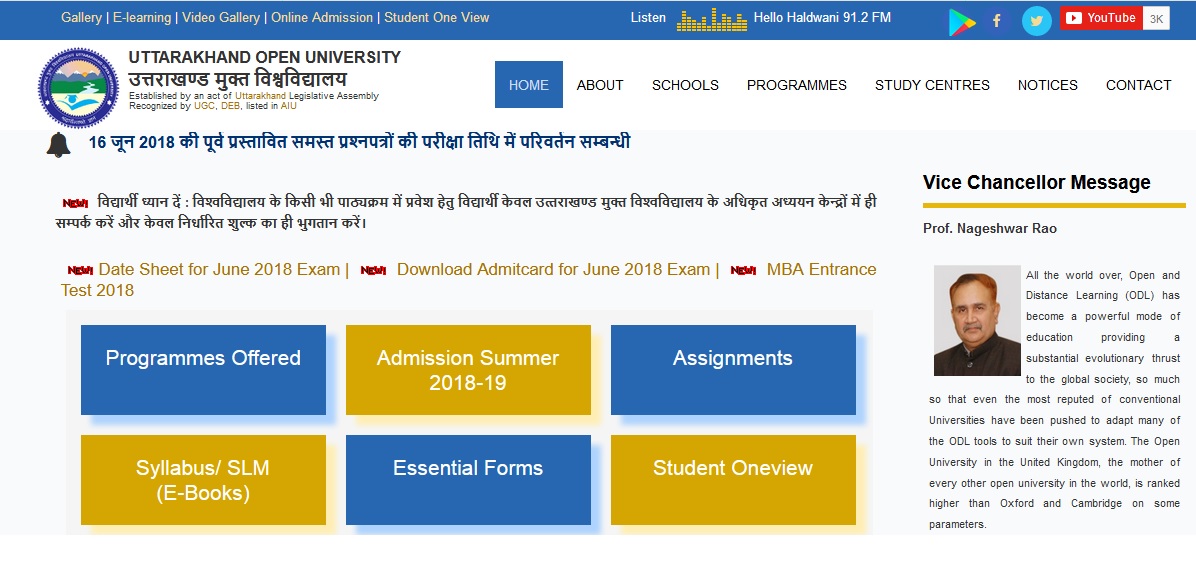EEC06 Pattern of Economic Development A Comparative Study B.A Question Bank : uou.ac.in
Name of the University : Uttarakhand Open University
Degree : B.A
Department : Economics
Subject Code/Name : EEC06 Pattern of Economic Development A Comparative Study
Document Type : Old Question Papers
Website : uou.ac.in
Download Model/Sample Question Paper : https://www.pdfquestion.in/uploads/uou.ac.in/4463.-EEC-06.pdf
UOU Pattern of Economic Development Question Paper
BA-10 (Part-3) Examination – 2012
Time : 3 Hours
Maximum Marks: 70
Related : Uttarakhand Open University EPA05 Financial Administration B.A Question Bank : www.pdfquestion.in/4476.html
Note : The questions paper is divided into three section A,B and C.
SECTION – A
(Long-answer – type questions)
December 2012
Note : Section ‘A’ contains four (04) long-answer-type questions of twenty (20) marks each Learners are required to answer two (02) questions only. (2×20=40)
1. Discuss the socio-economic structure of Japan during Tokugava period.
2. Describe a proper theory for labour intense economics growth. How capital intensive economics are different to it.

3. Describe the economic problems emerged due to rise of rival nations of England.
4. What are the differences between capitalism and socialism? Which economic system is suitable for India?
SECTION – B
(Short – answer – type questions)
Note : Section ‘B’ contains eight (08) short- answer type questions of five (05) marks each. Learners are required to answer four (04) questions only. Answers of these
questions must be restricted to two hundred fifty (250) words approximately.
Briefly discuss any four (04) of the following;
1. What is known as scissors crisis-
2. Mention the important features of agricultural revolution in Britain.
3. Mention the Marxian stages of development.
4. Write a short note on the Gold standard.
5. Describe the growth of cotton textile industry in Japan before the first world war.
6. The export of capital is the outcome of colonial rule. Describe this statement.
7. Describe the economic development of Russia between 1860 and 1917.
8. Explain the Arthur Lewis Model.
SECTION – C
(Objective – type questions)
Note : Section ‘C’ contains ten (10) objectives –type questions of one (01) mark each. All the questions of this section are compulsory. (10*1=10)
Indicate whether the following are true or false;
1. In Japan the Big farmers are Jinushi.
2. The World’s Great Depression was begun in September 1929.
3. Russian agriculture is a long-term growth than Germany.
4. Unlimited supply of the labor theory given by Lewis.
5. Neo-traditional School of Economics was developed in eighth decade.
Indicate the correct answer-option :
6. Railways nationalized in Japan occured.
A.1905 B.1906 C.1907 D.1908
7. Where was the Scicessor’s crisis.
A.(Japan) B.(Russia) C.(England) D.(India)
8. The author of the book The stages of Economic Growth.
A.(Rostows) B.(J.R.Hicks) C.(Keynes) D.(Marshall)
9. Begun modern economic growth .
A.(Japan) B.(Russia) C.(England) D.(India)
10. The concept of social dualism given by-
A.(J.H.Boik) B.(Lewis) C.(Keynes) D.(Marshall)
May 2015
Third Year, Examination-2015 :
EC-06 Money, Banking & Finance :
Time : 3 Hours
Maximum Marks : 60
Note : This paper is of sixty (60) marks divided into three (03) sections A, B, and C. Attempt the questions contained in these sections according to the detailed instructions given therein.
Section – A : (Long Answer Type Questions)
Note : Section ‘A’ contains four (04) long-answer-type questions of fifteen (15) marks each. Learners are required to answer any two (02) questions only. (2×15=30)
1. Discuss functions of money in the context of modern economies.
2. Critically discuss various methods of quantitative credit control.
3. Distinguish between direct and indirect taxes and explain why there is greater dependence on direct taxes for revenue in developing countries.
4. Discuss critically the nature and scope of Public Finance.
Section – B : (Short Answer Type Questions)
Note : Section ‘B’ contains eight (08) short-answer-type questions of five (05) marks each. Learners are required to answer any four (04) questions only. (4×5=20)
Explain the following :
1. Keynesian Liquidity Trap.
2. Demand pull inflation.
3. Fisher’s approach to quantity theory of money.
4. Functions of commercial Bank.
5. Importance of International Economics.
6. Problems in the measurement of National Income.
7. Reasons for an increase in Public Expenditure.
8. Taxable capacity.
Section – C : (Objective Type Questions)
Note : Section ‘C’ contains ten (10) objective-type questions of one (01) mark each. All the questions of this section are compulsory. (10×1=10)
1. “Money consists of those things which, within a society, are of general acceptability.” With whom is this statement associated?
(a) Marshall (b) Keynes
(c) Seligman (d) Ely
2. Who is the writer of the book “General Theory of Employment, Interest and Money”.
(a) Keynes (b) Robertson
(c) Crowther (d) Adam Smith
3. Who is the author of ”A Treatise on Money” ?
(a) Crowther (b) Dalton
(c) Bastable (d) None of these